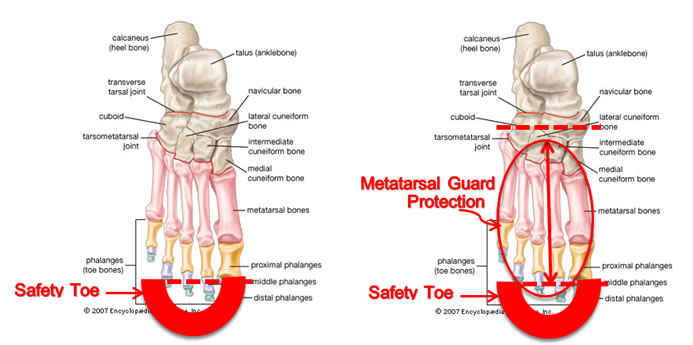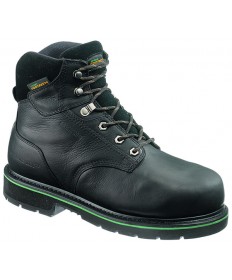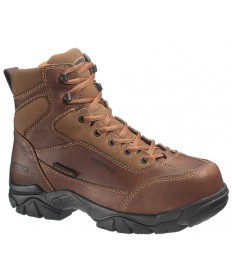Listed here are the Best SAFETY and Work Boot Brands on the market. All of these brands are good and worthy of mention, but this breakdown will most likely help you select the work boot that best fits your needs. What the industry calls a “Brown Boot Company” is not without reason, as the nickname implies a product that meets a very basic, universal need for a lasting, durable work boot.
HYTEST
HYTEST is the oldest safety shoe maker and is still the leader in innovative safety shoe technology offering many styles for both men and women.
One of their most notable breakthroughs is their invisible and well-constructed XRD Metatarsal Guard, which is 50% safer than other metatarsal guards offered by other companies.
They offer the 6″ and 8″ work boot and Wellingtons to name a few. Their very high quality sub-brand, “FootRests” is the only brand of safety shoe to receive the APMA (American Podiatric Medical Association–The Podiatrists) certification for a comfortable safety shoe. “FootRests” makes very comfortable men and women’s work shoes, boots, wellingtons, and metatarsal guard shoes.
WOLVERINE
Wolverine is a very popular, legendary brand, offering not only many styles of soft-toe work boots, but also a lot of safety shoes, as well. They are indeed a classic, American “Brown Boot Company”, that has used modern, direct-attach construction and contemporary styling to enhance the Consumers’ work boot experience.
Their best brand, “DURASHOCKS” uses “Direct-Attach Construction”, which contributes to its remarkable durability. Recent upgrades to the DuraShocks brand include their MultiShox and award-winning Contour Welt brands that are similarly constructed. The sole on these brands is attached to the upper while it is in a liquid state, so it cures and attaches to the upper without stitches; creating a highly durable work boot for many different environments. Because this construction is so resilient and allows for the use of many different bottom materials, including Polyurethane, Thermo Plastic Urethane (TPU) and Rubber, these boots are capable of withstanding many tough industrial environments, like high-heat, water and chemical, and oil-based industries. These brands come in all the work boot styles, soft-toe and safety-toe, including oxfords, 6” & 8” boots, hikers, Wellingtons, and metatarsal guards.
While Wolverine makes many casual styles, hikers, and Wellingtons, their claim-to-fame is truly their safety and soft-toe work boots.
TIMBERLAND PRO
Timberland Pro is a division of Timberland. Despite being relatively new to safety shoes and heavy duty work boots, it has retained Timberland’s loyal following by bringing their contemporary styling, beautiful leathers, and high quality, to the work boot industry.
Their most famous style is their 6″ Gold Nubuck leather boot. While that style is their most famous style, their most popular line of boots has been the TiTAN brand boots and shoes, which uses very nice work leathers and a dual-density Polyurethane-TPU (Thermo-Plastic Urethane) outsole to provide good looks and great performance for its loyal customers.
Timberland Pro’s work boots not only look good, but they use superb technology, as well, offering work boots with features such as electrical hazard and static dissipating technology.
Timberland’s reputation for very popular, high-quality safety footwear clearly continues that tradition with its Timberland Pro line.
ROCKY
Rocky boots are well-known for its waterproof, hunting and outdoor boots, as well as their work boot line. They were one of the biggest users of Gore-Tex waterproofing membrane in their boots and this made them a very popular, American brand. In work boots and safety shoes, they are known for using high-quality leathers and soles in their boots and styling popular with outdoor consumers, including Wellingtons, logger boots, and insulated-waterproof boots and shoes.
One of their most popular lines is their Mobilite® line which features an oblique (extra wide) safety toe, waterproof membrane, high-quality, oil-tanned leather, and excellent slip-resistant outsole. And this style is available in a soft-toe, 6” style RO7114.
Georgia Boot
Georgia Boot, which in recent years was purchased by Rocky, is another very popular, American work boot brand. The Georgia brand is very well-regarded, especially in the Southeastern United States, and they also use high-quality leathers and traditional styling to produce excellent work boots.
Georgia’s trademark is the distinct use of a “RAND” around the sole of their Georgia Giant brand shoe, which is made in both soft-toe and safety-toe basic work styles, including 6 and 8 inch boots and very popular Wellingtons. This shoe features a very light, polyurethane sole and high-quality, oil-tanned leather, which makes this style light-weight, while providing a very durable leather and slip-resistant outsole.
DR. MARTENS
Dr. Martens Industrial shoes are made in England and are popular with many millennials due to their distinctive look, which includes work-shoe styling, clear PVC sole, and yellow stitching. Dr. Martens are mostly used in lighter industrial environments.
Dr. Martens were made popular with their PVC “Hot Knife” construction process, that bonds the PVC sole to the boot. The unusual, clear, PVC sole is heavy, but it has many redeeming qualities that make it popular. The sole is very resilient and has a cushioning property, and even though it feels “soft” on the feet, it is actually very durable in most environments except heat. (PVC melts at very low temperatures, which makes it inappropriate for metal industries that have hot materials on the floor.) Additionally, though PVC is also a very slip-resistant compound, and that also makes it very popular in slippery environments. And because it is also durable in chemicals and oils, it does a good job in industrial environments despite its limitations in high-heat.
One more unique feature of Dr. Martens is that they have traditionally only been available in one width and whole sizes only (8, 9, 10, 11, etc. no half-sizes), which makes them more difficult to fit comfortably. Dr. Martens will continue to maintain its popularity with young workers because of its unique styling and be important in certain work environments and industries.
THOROGOOD
Thorogood is a brand produced by the Weinbrenner Shoe Company in Wisconsin. They also are traditional American work boot brand and also make a lot of boots for the uniform industry. Their boots feature excellent leathers, durable soles, and traditional work boot styling, and also have many safety specifications, like Electrical Hazard, Static Dissipating, and Metatarsal Guards. Their boots are regarded as some of best for tough industrial conditions, as they use a variety of constructions (welt, cement, and direct-attach) to build boots for specific environments and needs. Whatever they may lack in styling, they make up for in their high quality, durable boots for industrial and work environments.
WARSON GROUP
The Warson Group has licensed several brands to support multiple segments of the work shoe industry; offering everything from dressy-casual and beautiful, colorful athletic styles for men and women to heavy-duty work boots for the steel and aluminum industry. They make static dissipating, electrical hazard, and conductive work shoes and safety boots, as well as soft-toe, uniform shoes.
- Florsheim Brand, known for dressy-casual styling, features some very handsome, dressy-casual style safety shoes, with excellent cushion insole materials. Additionally, they also have a line of outstanding heavy-duty safety work boots, with excellent leathers and durable soles. including a variety of dressy casuals and safety shoes. Both Static Dissipating and Electrical Hazard styles are available.
- Rockport Works, also known for their men’s dress-casual safety shoe styling, features excellent styles of popular men’s and women’s boat shoes and other casuals. Additionally, its work shoes, hikers, and 6″ work boots are equally nicely styled and feature excellent outsoles, beautiful leathers, and comfortable insoles. They too, make their safety toe work shoes with Static Dissipating and Electrical Hazard specifications. Rockport Works also make a small line of soft-toe, slip-resistant work shoes for men and women.
- Reebok, known for its athletic styling safety shoes, brings in the beautiful colors to athletic safety-toe and work shoe industry. Reebok has only been in the safety toe market for a few short years, but already they have made a positive impact on light-weight athletic styling for men and women. They provide outstanding competition for Skechers and Nautilus, especially for women’s styling, which has gotten much better since they entered the market. Reebok makes all varieties of athletic safety-toe and soft-toe, slip-resistant work shoes, including conductive, static dissipating, and electrical hazard.
- Iron Age Brand is old brand purchased by Warson Group and now used to market their heavy duty work shoe styles. These work boots feature excellent leathers, and contemporary styling, durable outsoles, and comfortable insoles. They are made with Electrical Hazard and Static Dissipating features.
CATERPILLAR
Caterpillar work boots are produced and marketed by Wolverine, which licenses this brand from Caterpillar. Caterpillar is hugely popular in Europe and has a growing reputation in the America because of its great contemporary styling, which is popular with young people
Caterpillar offers both soft-toe and safety-toe work boots, and their work shoes feature very contemporary styling. They have two basic lines of shoes: casual-athletic-hiker styles which have colorful, attractive patterns, while featuring light-weight, durable, slip-resistant outsoles and work styles, which have heavy-duty, high quality leathers and outsoles, great contemporary styling, and comfortable insoles.
Because Caterpillar is synonymous with high quality, tough products, Caterpillar work shoes have taken that reputation and built some outstanding and comfortable work boots, both safety-toe and soft-toe, for men and women, that are very appealing to the younger generation.
NAUTILUS
Nautilus is known for its athletic shoes, but it has made a name for itself in the work shoe industry by morphing their athletic constructions and designs into a line of men’s and women’s athletic safety shoes and also soft-toe, slip-resistant shoe styles as well. Their focus and key products are their colorful and comfortable, men’s and women’s, athletic, safety shoes, which feature some styles with an extra-wide safety-toe, an extra wide width, and extra-large sizes.
They also own the AVENGER and Skidbuster brands, and together with Nautilus, they offer static dissipating, electrical hazard, waterproof, metatarsal, and slip-resistant work shoes.
SKECHERS
Skechers is very popular for their contemporary, men’s and women’s, athletic work shoe styling. They are responsible for bringing great-looking, colorful, lightweight, and comfortable work shoes to the safety shoe industries. Additionally, they have pioneered contemporary styling in slip-resistant work shoes, and more recently, the extremely comfortable “Memory Foam Insole” technology in their athletic work shoes and safety shoe lines. Recently, Skechers is trying to transform athletic styling and comfort technologies into heavier duty work shoes and work boots, including Wellington Boots.
While Skechers has been the leader in bringing great styling, comfort and slip-resistant features to the athletic work shoe industry, they have had a difficult time consistently delivering their products on-time, and they do not warranty their products against defects. Nevertheless, Skechers is very popular with consumers in many environments that want to wear beautiful athletic and comfortable shoes to work.
CAROLINA
Carolina Shoe Company specializing in high-quality, heavy duty work shoes, including specialty boots, like loggers and lineman boots and safety-toe and metatarsal guard safety shoes. Through the years, Carolina has made great boots with high quality leathers and soles, mostly for men, but in recent years, Carolina has produced some nice basic athletic and casual styles, featuring mostly safety-toe shoes for men and women. They have specialty shanks with reinforced steel specially created for standing on small poles for a long period of time.
JUSTIN BOOTS
Justin Boots have been known through the years for their western and Wellington style work boots, and they are considered one of the Best American Work Boot Brands because of their long history of providing high-quality leather work boots. In recent years, Justin has moved and improved their position in the safety toe market by offering a variety of western safety toes, including a new square toe design.
Ariat
Relatively new the work boot industry is Ariat, but they are a very traditional western and work boot manufacturer that uses high quality leathers and classic styling to make both work and safety boots.

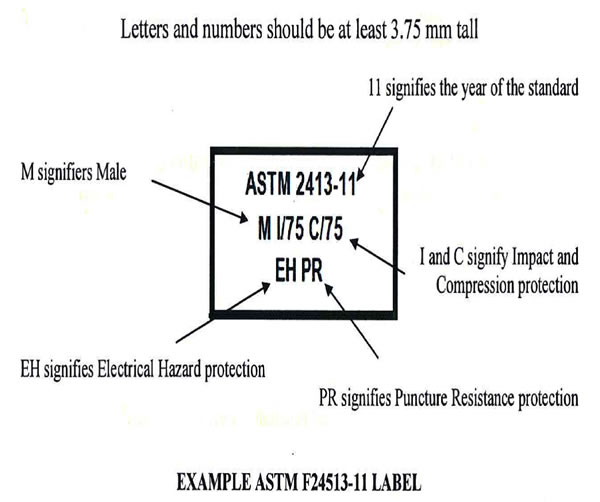
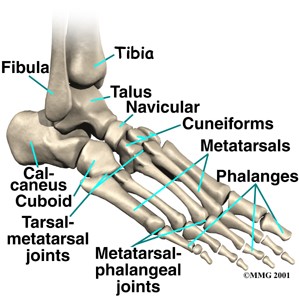 Why are metatarsal work boots so important? Because the metatarsal bones of the foot are very vulnerable to injury because the front of the foot sticks out beyond the body line, inviting a rolling or falling object to collide with this unprotected part of the body. This picture of the metatarsal bones in the foot demonstrates how exposed to injury this part of the foot is.
Why are metatarsal work boots so important? Because the metatarsal bones of the foot are very vulnerable to injury because the front of the foot sticks out beyond the body line, inviting a rolling or falling object to collide with this unprotected part of the body. This picture of the metatarsal bones in the foot demonstrates how exposed to injury this part of the foot is. 